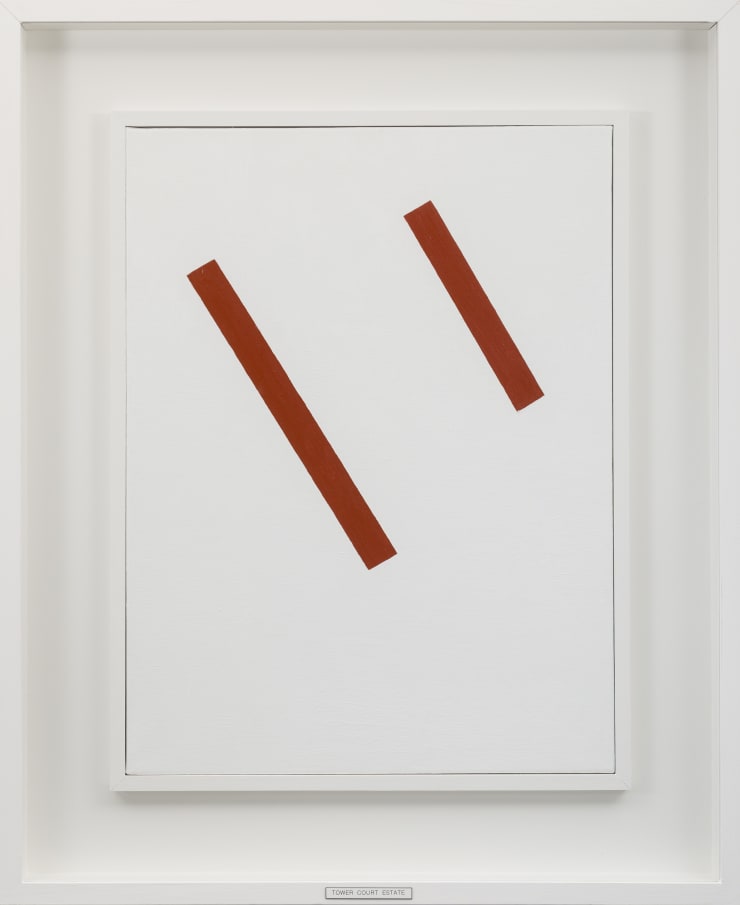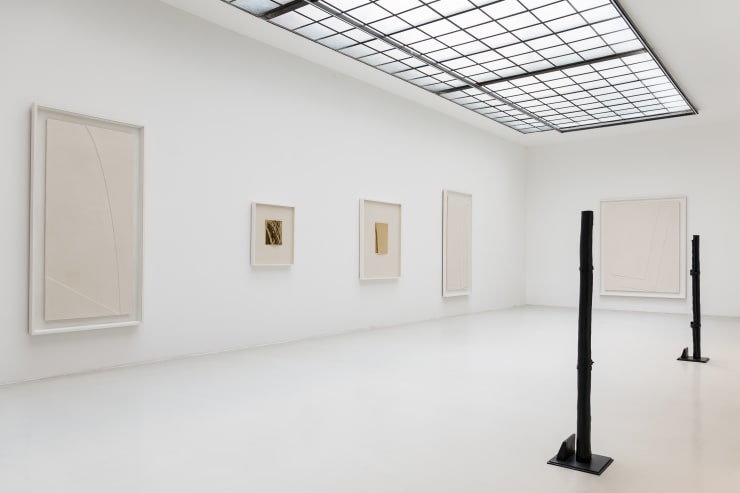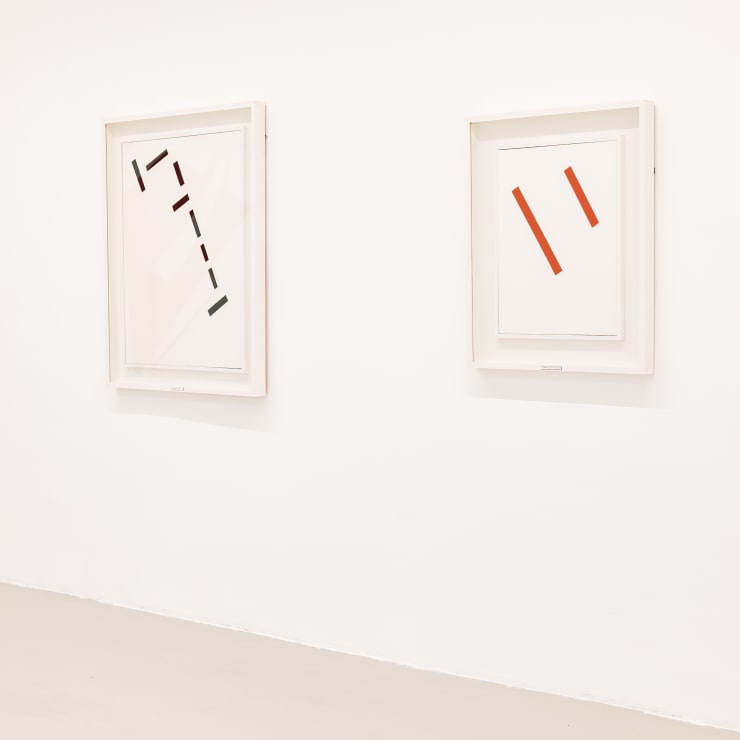Keith Coventry | Tabula Rasa: Main room
Galerie Lisa Kandlhofer is pleased to present the first solo exhibition of British artist Keith Coventry in Austria.
Keith Coventry was born in Burnley, UK, in 1958. He lives and works in London. He has shown internationally since the early 1990s. In 1997 Coventry was featured in the legendary „Sensation“- exhibition of the Young British Artists. He has works in a number of major public collections including Tate; UK Government Art Collection; Arts Council; British Council; Museum of Modern Art, New York; David Roberts Collection, Museum of Modern Art, San Diego, Walker Art Centre, Minneapolis and Saatchi Collection. In 2010 Coventry was awarded the John Moores Painting Prize. His work was included in Double Act: Art and Comedy, an exhibition presented at The MAC Belfast in 2016. Keith Coventry is represented by The Pace Gallery, London.
In his artistic practice Coventry deals with the ruins of modernism, and here especially the inevitable failure of modernist architecture serves as an impetus. The Latin term “tabula rasa”, which is also the title of his exhibition at Galerie Lisa Kandlhofer, denotes a blank space, resulting from the obliteration of an original content. Hence a new beginning becomes possible, an alternative process that does not need to be based on pre-existent conditions can begin. In view of the development of a modernist aesthetic in architecture and urban planning, the cities destroyed during wartime could be described as “tabula rasa”.
Keith Coventry draws on the abstract geometric vocabulary of the Russian Suprematism in his Estates series; it is inspired by the coloured maps found at the entrance to housing estates. With their often-ironic titles, these paintings combine an attractive surface aesthetic with a reference to a derelict and decaying subject matter and comment on the failings of the utopian ideals of Modernism.
In the Pure Junk series, Coventry constructs white monochromatic paintings of smoothly sloping forms derived from the contours of McDonald’s golden arches logo. Constructed from muslin, beeswax, gesso, glass, and wood, these works assume a low-relief sculptural presence, emphasizing the object quality of painting. Evoking a strand of modernist and post-war art, Coventry establishes a link between a hygienic aesthetic free of decoration and this larger emergence of junk food, which assumes further complexities in light of the all-natural media of the work.
Coventry’s sculptures are the detritus of urban life cast in bronze: dead saplings removed from run-down housing estates and things found during his wandering through London while thinking about art. His Junk works, for instance, employ the geometry of the McDonald’s logo in small bronze and gold sculptures that literalise the golden arches euphemism. The use of bronze transforms the design motif of hamburger wrappers and, in Coventry’s words, “ennobles the ignoble.”
-

Keith Coventry, Goschen Estate, 1999
Oil on linen, glass and wood
112 cm x 91.5 cm x 5.5 cm, framed
Copyright: Keith Coventry | Courtesy Pace Gallery
-
 Keith CoventryTower Court Estate, 1999Oil on linen, glass and wood
Keith CoventryTower Court Estate, 1999Oil on linen, glass and wood
No. 6072984 x 69 x 5.5 cm
33 1/8 x 27 1/8 x 2 1/8 in -
 Keith CoventryGolden Arches XVIII, 2017Gesso, glass, wood, bronze and gold
Keith CoventryGolden Arches XVIII, 2017Gesso, glass, wood, bronze and gold
No. 6729544 x 39 x 5 cm
17 3/8 x 15 3/8 x 2 in -
 Keith CoventryUntitled (Junk Painting XVI), 2012Oil on linen, glass and wood
Keith CoventryUntitled (Junk Painting XVI), 2012Oil on linen, glass and wood
No. 60206177.5 x 146.5 x 8 cm
69 7/8 x 57 5/8 x 3 1/8 in -
 Keith CoventryUntitled (Junk Painting V), 2012Oil on linen, glass and wood
Keith CoventryUntitled (Junk Painting V), 2012Oil on linen, glass and wood
No. 60208177.5 x 146.5 x 8 cm
69 7/8 x 57 5/8 x 3 1/8 in -
 Keith CoventryPure Junk XIII, 2016Carved wood, muslin, beeswax, gesso, glass and wood
Keith CoventryPure Junk XIII, 2016Carved wood, muslin, beeswax, gesso, glass and wood
No. 63070227 x 184 x 7 cm
89 3/8 x 72 1/2 x 2 3/4 in -
 Keith CoventryPure Junk XVII, 2016Carved wood, muslin, beeswax, gesso, glass and wood
Keith CoventryPure Junk XVII, 2016Carved wood, muslin, beeswax, gesso, glass and wood
No.67352216 x 110 x 7 cm
85 1/8 x 43 1/4 x 2 3/4 in -
 Keith CoventrySupermodel (Kate Moss), 2000Steel with gold plate68.5 x 43 x 11.5 cm
Keith CoventrySupermodel (Kate Moss), 2000Steel with gold plate68.5 x 43 x 11.5 cm
27 x 16 7/8 x 4 1/2 inAP 3 of 3, Edition of 10 + 3 APs -
 Keith CoventryFriary Road, SE15, 2009Bronze
Keith CoventryFriary Road, SE15, 2009Bronze
No. 60736.03150 x 30 x 30 cm
59 1/8 x 11 3/4 x 11 3/4 inEdition 3 of 3, Edition of 3 + 2 APs













